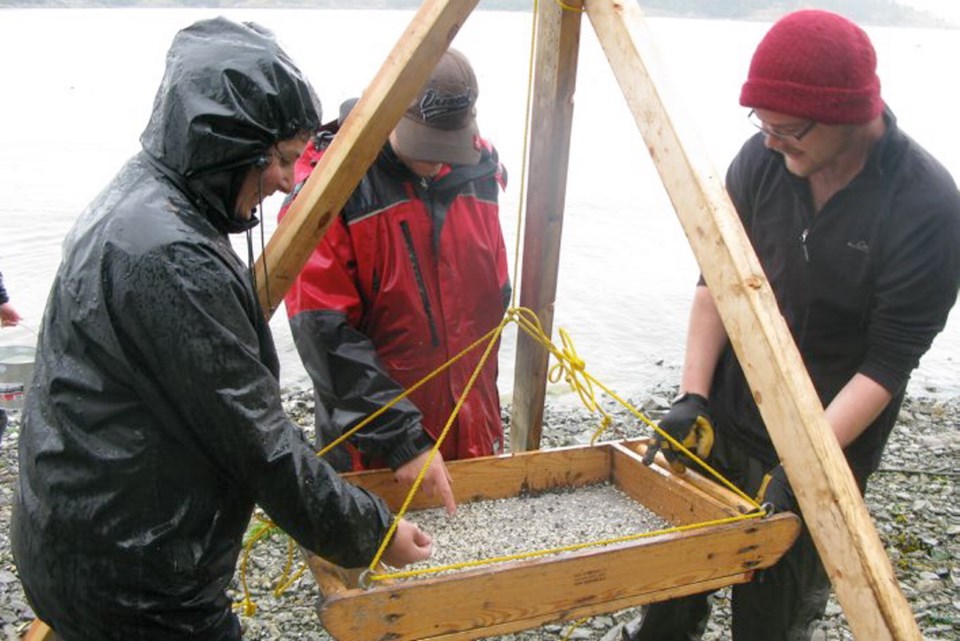The excavation of what appears to be an ancient food storage system along the beach of Russell Island, between Fulford Harbour and Swartz Bay, is helping to cast more light on the history and development of local aboriginal groups.
Six years after researchers discovered two clam gardens along the beachfront, University of Victoria students are sifting through sand, gravel and shells to figure out how and when the gardens were built. Some researchers have suggested the gardens helped augment a community’s food supply.
The gardens are beach areas where clams grow naturally and have been enhanced to increase clam production.
“From some groups of elders we’ve talked to, they say these clam gardens basically acted as food banks,” said Nathan Cardinal, the cultural resource management adviser for the Gulf Island National Park Reserve. “If they couldn’t get enough food to get through the winter, they could come here and grab shellfish.”
For the past three years, anthropology students have pitched their tents and spent May and part of June studying historical aboriginal sites around Vancouver Island. The clam gardens they are studying are small fields built on the beach at low tide with surrounding rock walls. The walls acted as a barrier to keep out seaweed and prevent predators from destroying the growing clams and other shellfish.
Like vegetable gardeners, those who tended the clam beds would till the sand, turning it over to provide the clams more oxygen.
“It shows that people didn’t passively react to their environment but rather created their own landscape,” said instructor Eric McLay.
McLay estimates the gardens on Russell Island are at least 1,000 years old. The island was once home to an aboriginal community and the clams may have been used for trade.
Clam gardens are a relatively new discovery for archeologists. The first one was found in the Broughton Archipelago in 1995. Since then, gardens have been discovered along coastlines from B.C. to Alaska.
For the UVic students, this week marks the one time each year that there’s a three-day window when the tides will be lowest, helping them get a clearer picture of the gardens.
Aboriginal representatives have joined the students to help teach about the role the gardens played in their culture.
Phillip Joe, a member of the Cowichan Tribe, said he remembers his grandparents telling him stories about the gardens. “The clam gardens are only a little bit of our culture, and there’s a lot more to be explained,” he said.



